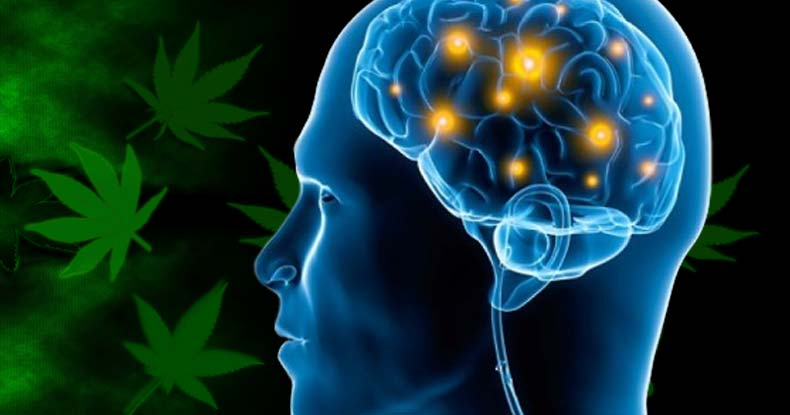Effects of Cannabis on Memory and Cognitive Functions
The aim of this study was to examine the effects of high-potency cannabis flower (THC ≥ 20%) and potent concentrates (THC ≥ 60%) on everyday memory and non-normative decision-making. Additionally, the study was designed to address two secondary objectives: 1) to compare the effects of high-potency cannabis flower with and without CBD; 2) to compare the effects of potent concentrates with those of cannabis flower.
The final sample included 80 cannabis users, with 20 participants in each of four groups (THC flower, THC+CBD flower, concentrates, and a non-user control group). The sample was well-balanced by gender (43.8% women, 56.3% men) and ranged in age from 21 to 44 years. The average age of cannabis initiation was 17.01 years, and participants had used cannabis for an average of 5.66 years. There were no significant differences in any demographic characteristics or cannabis use patterns between the four groups, suggesting that random assignment successfully created equivalent baseline groups.
The average THC concentrations were 22.82% in the THC flower group, 22.81% in the THC+CBD flower group, and 71.43% in the concentrate group. The average CBD concentrations were 0.00% in the THC flower group, 1.32% in the THC+CBD flower group, and 2.20% in the concentrate group. Figure 1 presents information on cannabis consumption by group. The results show that participants in the concentrate group took significantly fewer puffs and had a significantly longer average inhalation duration.
Figure 1. Cannabis consumption in different groups. The bars represent the average number of puffs, average inhalation duration, and average hold duration in the THC flower, THC+CBD flower, and concentrate groups.
Figure 2. Assessment of intoxication level from cannabis use. The lines represent average intoxication ratings before, immediately after, 25 minutes after, and 50 minutes after cannabis use in the four groups.
Mood, Anxiety, and Stress Ratings
Figure 3 shows changes in mood (A), anxiety (B), and stress (C) over time for the four groups. Anxiety and stress generally decreased over time with minor differences between groups. Importantly, there were no group differences in mood, anxiety, or stress ratings at any specific time point, except for stress ratings one minute after use, which were significantly lower in the THC flower and concentrate groups compared to the sober control group.
Figure 3. Changes in mood (A), anxiety (B), and stress (C) during the study. The lines represent average ratings before, immediately after, 25 minutes after, and 50 minutes after the cannabis inhalation session in the four groups. Ratings were given on a scale from 0 to 10, where 0 is extremely negative and 10 is extremely positive.
This is the first study to examine the acute effects of cannabis on prospective memory, sequence recall, risk assessment, and self-confidence. Despite using products with high cannabinoid content, researchers did not find any significant effects on any of these outcomes.
This may reflect a true lack of cannabis impact on these aspects of cognition. Indeed, the null results for non-normative decision-making are consistent with some previous publications that have shown minimal or mixed acute effects of cannabis on decision-making.
All three cannabis-using groups demonstrated a negative impact of cannabinoids on memory. Comparing the effects of cannabis flower with and without CBD showed that the THC+CBD flower group freely recalled significantly fewer images in the memory test compared to the placebo, THC flower, and concentrate groups. This contradicted our hypothesis and previous studies suggesting a protective effect of CBD on memory. It is possible that the CBD concentrations in the THC+CBD flower products used in this study were not high enough to produce the previously observed protective effects.
Although we aimed for higher CBD concentrations, it turned out to be extremely difficult to find flower with high THC and high CBD content. Human studies on pharmacokinetic interactions between THC and CBD are limited, but available research suggests that inhaling cannabis containing 11% THC and 11% CBD leads to higher plasma THC concentrations than cannabis containing 11% THC and less than 1% CBD.
In some cases, cannabis with a balanced THC:CBD ratio caused more severe functional impairment than THC-dominant cannabis. Thus, the products used by our THC+CBD flower group may have produced stronger effects than those in the THC flower group because CBD enhanced the effects of THC.
The results also did not support the hypothesis that concentrates would worsen cognitive impairment. However, participants randomly assigned to use concentrates took significantly fewer puffs and subsequently self-reported the same level of intoxication as those randomly assigned to use flower.
Once again, these important and novel results show that all three cannabis-using groups self-titrated to achieve comparable levels of intoxication. Therefore, it is possible that the flower and concentrate groups did not differ significantly in the total amount of THC absorbed, despite differences in product potency.
Source
- Our other channels
- Our friends and partners



